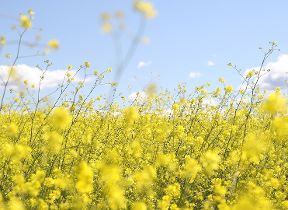10 facts about spring
How spring can affect your sense of smell and other bizarre facts about the season
1. It starts at different times
Spring can start at different times, depending on who you ask. Looking at the astronomical calendar the first day of spring is 20 March. The Phenological method records dates of reoccurring natural phenomena such as flowering. For meteorologists, spring starts on 1 March and runs until 31 May.
2. Snow?
Many people say you're more likely to see snow at Easter than at Christmas. This is borne out of statistics to some extent - snow or sleet falls on average 3.9 days in December, compared to 4.2 days in March. However, because Easter is a 'moveable feast', it can also take place in April, which has only 2.3 days of snow or sleet fall. So it depends on exactly when Easter falls in any given year.
3. Vernal Equinox
The first day of spring, the vernal equinox, has 12 hours of daylight and 12 hours of darkness.
4. The warmest spring...
The warmest spring on record was 2011 with an average daytime temperature of 9.2 °C.
5. ...and the coldest spring
Was the spring of 1962, with an average daytime maximum of 5.8 °C.
6. The wettest spring
1947 saw the wettest spring to date with 331.7 mm of rainfall.
7. Average temperatures
The average mean temperature for spring is 7.7 °C.
8. Something in the air?
Sense of smell can be more acute in spring as there is usually more moisture in the air.
9. It isn't the start of the pollen season
Spring is often associated with the start of the pollen season. However, some pollen types can release as early as January.
10. The sunniest spring
The sunniest spring was in 1948, in which a total of 558 sunshine hours were recorded.





